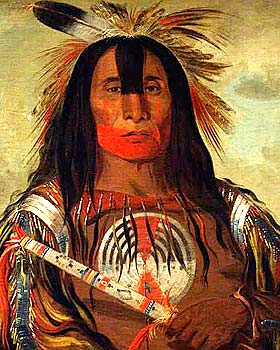They sail across the Atlantic Ocean and come ashore on the coast of the New World at what is now Mobile, Ala., centuries before Christopher Columbus’ voyage.
The settlers followed the rivers north, founding settlements along the way, but repeatedly fleeing hostile locals. They eventually settled in Clark County, where a bloody, final battle virtually eliminated the race. Traces of their civilization and possibly some descendants survive today, but their connections to the past are lost.
This is a common variation of the legend of Prince Madoc, his fellow settlers and their descendants. The story has persisted for centuries, particularly in Britain and in areas such as Indiana where these pre-Columbian European settlers are said to have lived and built forts. New life is being breathed into the legend by filmmakers.
Olson, of Jeffersonville, is the author of “The Legend of Prince Madoc and the White Indians,” originally published in 1987. Olson said he has sold approximately 10,000 copies of the book.
It was a trip several years ago to the Falls of the Ohio State Park and reading Olson’s book—found at the gift shop—which inspired Haskell to make the film. He has since traveled with Olson and archeologist Sundea Murphy to sites said to support the legend as fact.
Local historian and Indiana University Southeast history professor Carl Kramer has been among Olson’s critics. Kramer dismissed many of the claims of the legend on a point-by-point basis during a phone interview. For example, a key part of the story includes early accounts of Indians describing a tribe as yellow-haired and blue-eyed. Kramer points out these are recessive traits unlikely to be dominant among a group of people.
He is also concerned about a subtle racism to the claims. A 19th century description and assessment of a stone fort suggests the construction must be European as the “savages” couldn’t have done it. Historians now know there were many technologically sophisticated cultures among the nations of North America.
He is interested in Olson serving as at least a consultant and possibly filming a cameo in the movie. Chaudoin said he already has a few scenes written and hopes to have a complete script within a month.
I can just imagine how stereotypical Chaudoin's film will be. The dwindling band of noble, civilized Europeans against hordes of murderous, savage Indians. With Princess Moon Flower trying to save Prince Madoc, the man she loves, from her bloodthirsty brethren. Spare me.
For more on the subject, see The Best Indian Movies.

